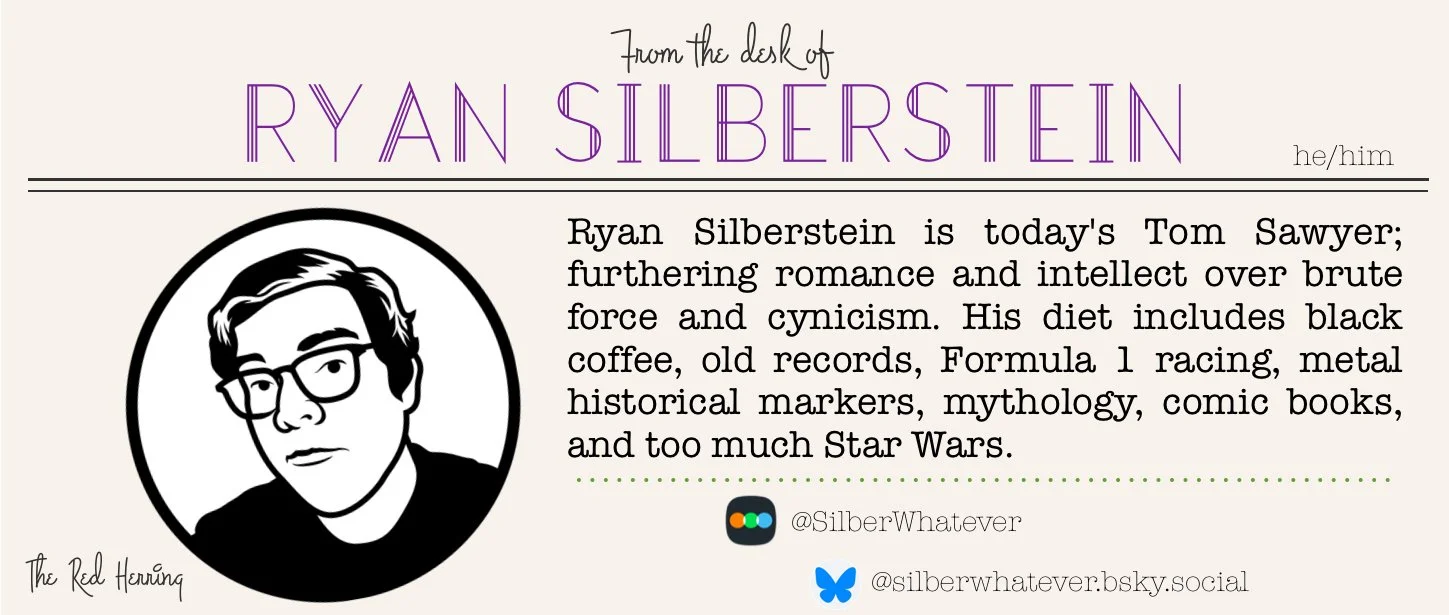WOLF MAN takes a non-traditional approach to the werewolf genre
Wolf Man
Directed by Leigh Whannell
Written by Leigh Whannell and Corbett Tuck
Starring Christopher Abbott, Julia Garner, Matilda Firth
Rated R
Runtime: 1 hour, 30 minutes
In theaters January 17
by Ryan Silberstein, Managing Editor, Website
I don’t know about you, but I’ve been having a lot of trouble focusing in 2025 so far. Whenever I try to do anything, my mind begins to race, thinking about the devastating wildfires in Los Angeles, the abhorrent behavior of Neil Gaiman, and the impending Trump inauguration. Plus, all of the things that are carrying over from last year. It may be counterintuitive, but horror provides a catharsis few other genres can when it comes to the mental squeeze and release that is often a soothing balm against the pain of the real world horrors we face every day. So when I journeyed out to the theater under the light of the full moon, I was hoping that the latest Universal Monsters reboot attempt would provide a welcome distraction from our perpetually troubled times. Alas, that was not to be. Leigh Whannell’s take on the classic werewolf story offers solid body horror but not much else.
Whannell shifts the setting of this reboot from Wales to a sparsely populated part of central Oregon, the change reflecting the themes of isolation from when the script was written at the height of the COVID-19 pandemic. Blake Lovell (Christopher Abbott) grew up in that remote area; after his father is declared legally dead by the state after disappearing in the wilderness years earlier, he heads back there with his wife, Charlotte (Julia Garner) and their daughter Ginger (Matilda Firth). As they approach his father’s farm, Blake and his family’s plans are upended when a human figure surprises them in the middle of the road, causing Blake to swerve their moving van into the woods and hang off the edge of a rock face. During this incident, Blake is badly cut on the arm, and quickly begins to appear sick. He slowly begins to transform into something more animalistic, and his senses are heightened. For example, while in the house’s basement, he begins to hear a spider walking in a closet on the second floor. Close sounds, however, become muddled, with words almost impossible to hear. The best moments in the film are the times Whannell switches over to Blake’s point of view, giving us a blue, almost film negative-like view of “werewolf vision,” showing how he can see in the dark, among other things.
Whannell discussed his approach to Wolf Man on the Films to Be Buried With podcast, and likened his conception of lycanthropy to that of a degenerative disease. While the power of the werewolf narrative is typically tied to the body horror of transformation exposing the darker, more animal nature within us, this movie is less traditional werewolf narrative and more adjacent to The Fly. While not a traditional approach to werewolf folklore, it is an interesting one. Sadly, Whannell’s vision is let down by his execution. In the original The Wolf Man (1941), Larry Talbot (Lon Cheney, Jr.) transforms back and forth between forms a few times, allowing the character to articulate his fear and pain stemming from what is happening to him. Blake’s condition, however, steadily progresses over the course of one single night. And because he loses the ability to articulate words so early in the process, the horror is meant to be rooted in the experience of watching a loved one recede to the point where they are not recognizable. Sadly, the character work in the film is not strong enough to make the emotional connection with the audience in order to make that horror emerge from what is happening on screen.
All of the characters in the film are thin enough to be transparent, which is a problem for a film that is attempting to be a werewolf character study. After the film’s opening where we see a young Blake with his father, the next scenes are dedicated to establishing the life of Blake, Charlotte, and Ginger. Blake is functionally a stay-at-home dad, and gets to be the “fun parent” while Charlotte works around the clock at her journalism job. He worries that their marriage isn’t in great shape because they struggle to communicate. She worries she is a bad mom to Ginger because father and daughter are so close. While somewhat cliched, they are well-tread for a reason: they are relatable. The problem is that there is not much else to any of these characters. The script wants to immerse you into this situation, but the film has to rely on the viewer to bring the emotional stakes to the fore. Thematically, it makes sense that Blake would lose his ability to communicate early on, but indecision around if the protagonist of the film is Blake or Charlotte undercuts the emotional stakes so thoroughly that the film never recovers. If the film was less serious in tone, it could at least be a fun watch. Instead, any remnant of the film completely evaporates by the time the sun comes up.
Support MovieJawn Staff
〰️
Support MovieJawn Staff 〰️
With the death of so much print media and meaningful journalism, it is important now more than ever to support the writers and outlets you love.
If you enjoyed this article, show your support by donating to our writer. All proceeds go directly to the writer. Recommended donation is $5.




